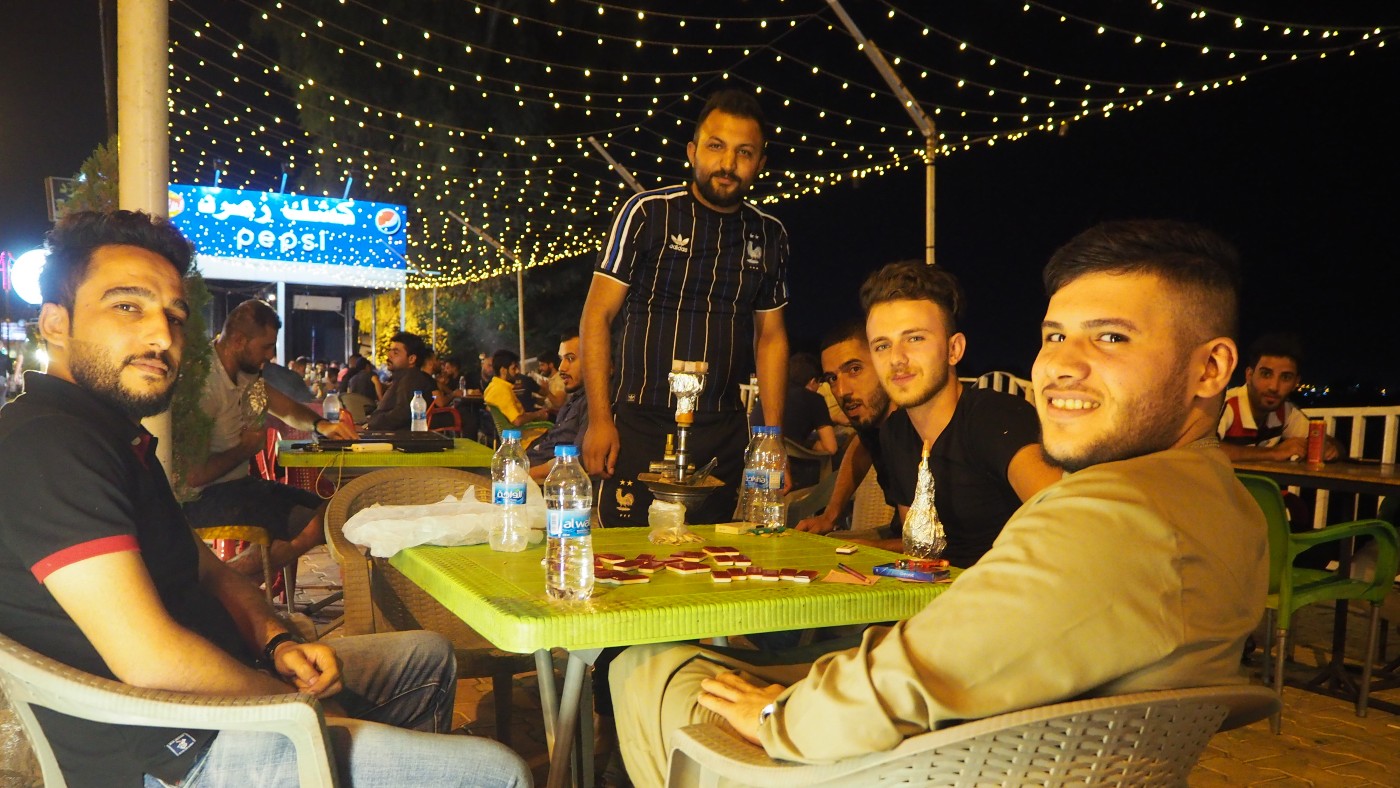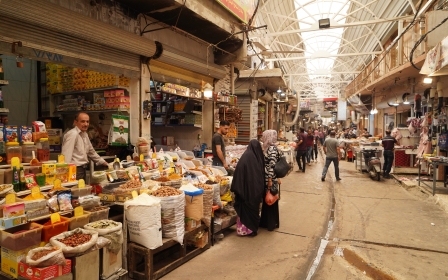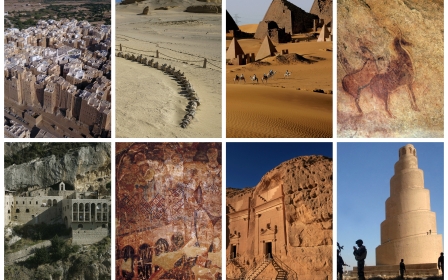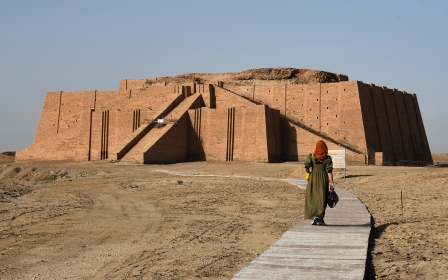Iraq: Mosul rebrands as domestic tourist destination
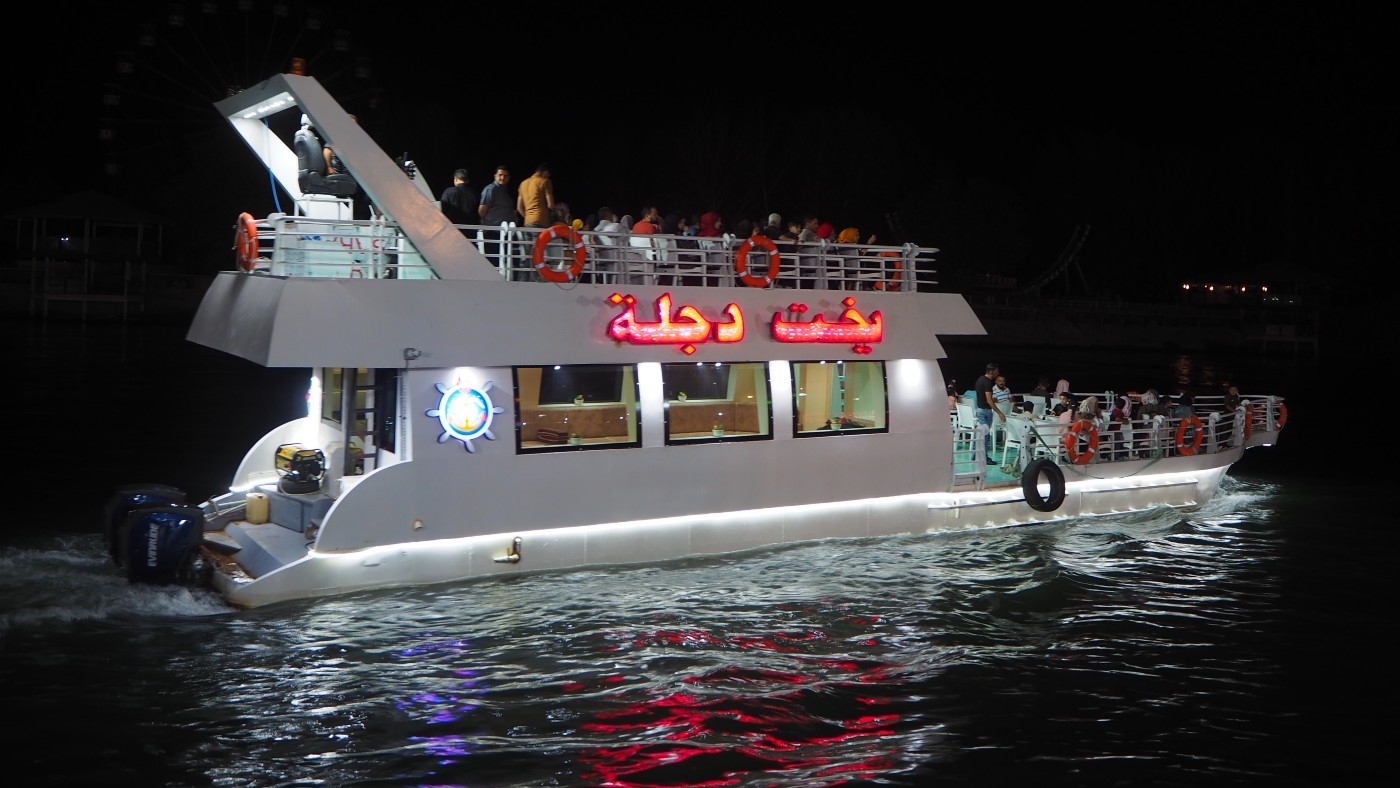
Every evening as the sun sets, Jungle Street comes vibrantly alive. Festooned with colourful electric lights, this leafy strip of a Mosul suburb in Iraq running alongside the banks of the River Tigris is lined with brightly lit cafes, shisha bars and restaurants. Two photographers wait beside an illuminated fountain, a popular spot for newlyweds to pose for photographs, and families usher excited children towards fairgrounds filled with colourful rides.
Behind the trees, an expansive restaurant tiers down the riverbank, overlooking the Tigris and a jetty where families in trendy attire and colourful hijabs queue for boat rides on pristine, cheerfully illuminated boats. The pop music pumping out of one small speedboat is drowned out by screams of excitement when it performs sharp turns in the river.
This is Mosul’s al-Ghabaat (jungle) district. Nearly five years ago, Iraqi special forces advanced here on an anti-Islamic State (IS) group operation, creeping between trees and through a fairground, where cartoon faces on rides had been smashed or painted out by IS militants. Today, it is the heart of Mosul’s tourism redevelopment.
“People show a bad impression of Mosul on the TV, but what do you think of Mosul?” 24-year-old university student Mohammed asked MEE. Like many others in the city, he avoids directly referencing IS and the war, which is now known locally as “the chaos”.
When reminded of why Mosul is infamous rather than famous, he admitted: “That’s all true,” before gesturing around the illuminated street with a wide beam, and saying, “but just look at Mosul now.”
New MEE newsletter: Jerusalem Dispatch
Sign up to get the latest insights and analysis on Israel-Palestine, alongside Turkey Unpacked and other MEE newsletters
After ‘the chaos’
The name of Mosul is hardly synonymous with tourism. The northern Iraqi city grabbed global media attention in mid-2014 when Abu Bakr al-Baghdadi proclaimed himself the head of a “caliphate” on swaths of land across Syria and Iraq captured by IS.
In October 2016, came a brutal war that lasted for nine months and left an estimated 60 percent of the city in ruins.
Across Mosul, reconstruction is now under way, and the al-Gharbaat district is at the forefront of rebranding the war-scarred city as a tourist destination for Iraqi visitors and even the occasional western tourist.
“I’ve been watching tourism restart here,” said Mohammed. “Visitors, mostly from central and southern Iraq, really started coming back in late 2018. We recognise their accents.”
He said al-Gharbaat was the main tourist area because its swift, early liberation minimised destruction and rendered rebuilding easier.
“Before the chaos, here and the Old City were the main tourist areas and there were loads of hotels in the Old City, but now there are none. People haven’t really gone back to the Old City - neither Mosulis nor tourists,” said Mohammed.
Mosul’s historic Old City, lying on the opposite bank of the Tigris, was the hardest hit by the war against IS, and large areas remain in ruins. Only a few historic sites are still standing, such as the remains of the 12th-century Bash Tapia castle, which overlooks the river.
Others are slowly being rebuilt. There is a UAE-funded Unesco project to reconstruct Mosul’s Great Mosque of al-Nuri and the leaning Hadba' (hunchback) minaret, alongside the ruined heritage buildings and winding alleys of the surrounding area.
Closer to the river, where the destruction is profound, a handful of shops and cafes have reopened independently, some beneath precarious-looking damaged structures.
“This is the centre of the Old City and was the very best part of Mosul before the chaos,” said carpenter Abu Omar, 60, who rebuilt his shattered workshop with his own funds. “I reopened in late 2018, but work is slow because the houses are all destroyed and the streets are no good here, so people are reluctant to return. We need serious government investment and a lot of reconstruction support to get people to come back.”
The return of tourists
With its cooler temperatures and varied terrain, northern Iraq has always attracted tourists from central and southern parts of the country, especially in the hot summer months. Since 2014, Iraqi Kurdistan has been the beneficiary of most domestic tourism, but the considerable investment in Mosul’s al-Gharbaat district aims to put the city firmly back on the map.
'They are coming from Basra to Baghdad, Ramadi to Tikrit, and even Erbil and Sulaymaniyah'
- Hisham Younis al-Gailani, receptionist at Mosul's Tourist Village
“Mosul is now very safe and tourists are starting to return,” Hisham Younis al-Gailani, a receptionist at the Tourist Village, told MEE, standing in front of a wall of room keys. “They are coming from Basra to Baghdad, Ramadi to Tikrit, and even Erbil and Sulaymaniyah.”
Top of his list of reasons for Mosul’s appeal is the weather, along with the hospitality of local people.
“Mosul cuisine is also famous across Iraq, especially dishes such as kubba [rice and beef patties], bacha [sheep’s head stew] and dolma. Southern Iraqis don’t find these dishes at home, so they like to come here to have their bellies pampered,” Gailani said, proudly adding that Mosul restaurants were also known for high hygiene standards and excellent service.
There are still comparatively few accommodation options in Mosul, the Tourist Village being one of them. Reopening the premises, first opened in 1990, was a challenge - the owners returned a few months after liberation from IS to find the place ransacked and vandalised.
“The houses were wrecked, buildings burned, everything stolen - even mattresses - electrical infrastructure destroyed and the trees burned,” Gailani recalled.
Restoration - including rebuilding accommodation, installing a small fairground and replanting the gardens - was undertaken by a group of 14 local businessmen, who have already ploughed in around 570 million Iraqi dinars ($391,000). “We sent the compensation files to the government but we’ve had nothing so far,” said Gailani. With funds running dry, perfecting the already pretty grounds remains an ongoing project.
While Mosul is unlikely to be pulling in large numbers of international tourists in the near future, its potential was boosted by Iraq lifting challenging pre-arrival visa procedures for residents of 36 countries, including the UK, the US and France.
“I have started taking visitors to Mosul, including a few from Italy and Russia to see the ‘Spirit of Mosul’, which is the Old City,” said Ali al-Makzoumy, co-founder and director of Baghdad-based tour operator Bil Weekend. “We visit the significant buildings that were destroyed, including the foundations of the Hadba' minaret to see what Unesco is doing there, and I introduce them to some very dynamic young people who are full of hope.”
No 'suitable infrastructure for tourism'
Not everyone believes that tourism should be a priority at the moment. One of Mosul’s five deputy governors, Mohammed al-Rawe, told MEE that as long as basic infrastructure and facilities for locals - including hospitals and schools - remained inadequate, he did not believe the time was right for Mosul to be developing tourism.
“We don’t have either enough hotels for tourists or suitable infrastructure for tourism,” he told MEE. “Al-Gharbaat is a good place by the river, but we don’t have the expertise of how to develop this place perfectly or how to attract tourism.”
It may be controversial to offer domestic tourists fancy restaurants, accommodation and boat rides, while many of Mosul’s population remain displaced, living in poverty or unable to access decent healthcare or even jobs. But the city’s business owners say they are also trying to forge livelihoods, and tourism could bring much-needed money to the local economy.
Regeneration efforts in al-Gharbaat are also reflected across the city, a testament to Mosul’s resilience. Where possible, there is reconstruction. Where reconstruction has not yet been possible, there are attempts to mask the worst of the damage: bullet holes cemented over, trees planted along central reservations and, until recently, colourful electoral campaign posters stretched across collapsed buildings.
Alongside this, locals are endeavouring to improve Mosul’s tarnished image and reputation, working with what they have. And one thing many Mosulis possess is a deep love for, and commitment to, this once-comely but now battered and scarred city.
This article is available in French on Middle East Eye French edition.
Middle East Eye delivers independent and unrivalled coverage and analysis of the Middle East, North Africa and beyond. To learn more about republishing this content and the associated fees, please fill out this form. More about MEE can be found here.



